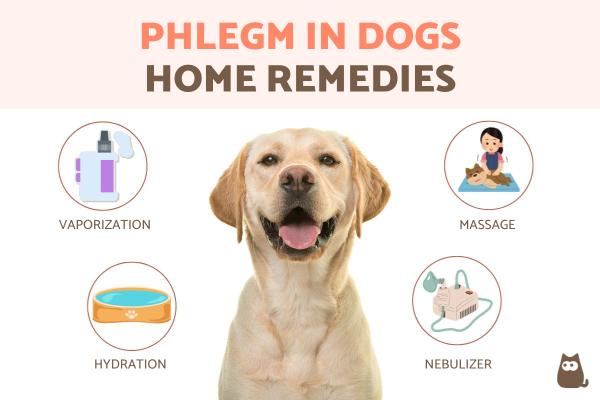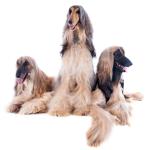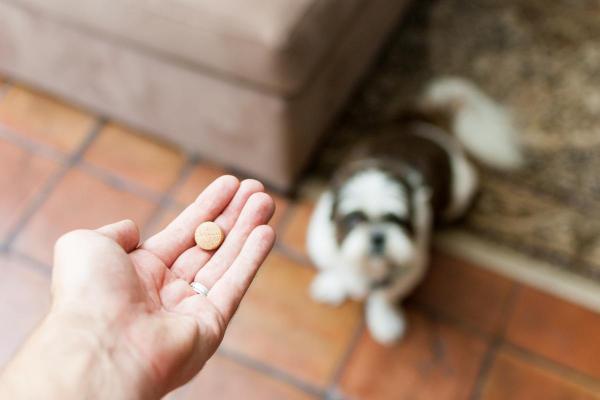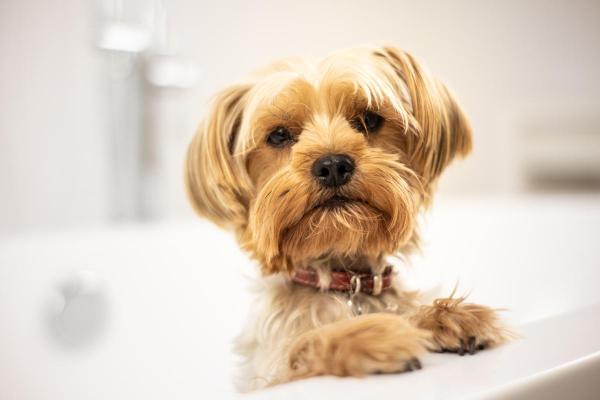Phlegm in Dogs Remedies



See files for Dogs
Phlegm is mucus produced by the lower and some parts of the dog's upper respiratory system, but it does not include nasal mucus. The latter you might produced with a runny nose, but phlegm often results from coughing. It is thick in consistency and often discolored rather than clear. As it is a result of irritation or infection, it may have some blood which is trapped along with the mucus. Its main function is to protect the dog's airways from agents such as viruses, bacteria, allergens or pollutants. Although some is normal, a large buildup occurs when these agents attack the body and it can result in difficulty breathing, cough or other respiratory symptoms.
If your dog has a buildup of phlegm, it is important to know the cause. This means you should take the animal to a veterinarian for diagnosis. After the diagnosis has been confirmed the veterinarian will establish the suitable treatment, something which may include the phlegm in dogs remedies which share at AnimalWised.
Why does my dog have phlegm?
Although some amount of phlegm is normal for a dog, a buildup is a result of a health issue. This is often a respiratory infection, the severity of which can vary greatly. However, infections are not the only cause and they can often be a secondary result of another problem. The phlegm can result in other symptoms such as the dog coughing and gagging since the airways are not as clear as they should be.
Some of the most common reasons for a buildup of phlegm in dogs include the following:
- Respiratory infections: various infections can affect different parts of the respiratory tract. These can include the common cold or influenza, but also serious issues such as kennel cough or even pneumonia. Since phlegm tends to be associated with the lower respiratory tract, it can often be a result of a more serious infection.
- Foreign objects: when a dog ingests or inhales something they shouldn't, it can become caught in the respiratory tract. This doesn't have to be one solid object. Foreign substances such as certain powders or fungi can enter the respiratory tract and produce phlegm as a means of eliminating it. Secondary infections can also occur if bacteria enters damaged tissues.
- Allergies: if a dog has a sensitivity to a certain allergen, exposure can result in the dog's immune system overreacting. This process can produce phlegm.
- Irritants: similar to both foreign objects and allergies, irritants can enter the respiratory tract and cause tissue damage, resulting in more phlegm than usual being produced.
- Heart disease: although we may not associate cardiac issues with respiratory problems, the two systems are closely linked. Heart disease can often cause fluid in the lungs and a resultant mucus buildup.
- Parasites: these pathogenic organisms can invade the respiratory system and result in overproduction of mucus. They can also wear down the immune system and cause the dog to be more vulnerable to other infectious agents such as viruses.
- Gastrointestinal diseases: infections or problems in other bodily systems can have a knock-on effect on the respiratory system. For example, acid reflux can damage the airways and result in phlegm buildup.
Some of the reasons why a dog has phlegm include chronic illnesses, such as heart disease or chronic bronchitis. Others are acute and the phlegm will go away once the underlying cause is treated. We look at dome phlegm in dogs treatment and remedies below.
Discover how to treat kennel cough specifically with our related guide.
Medical treatment
As stated in the introduction, you will need to determine the reason why your dog has phlegm in the first place. Using home remedies without a diagnosis is dangerous since it may defer a more appropriate treatment, during which time the problem will worsen. Some remedies may worsen the situation if we do not know what we are doing.
Veterinary medications to treat phlegm are rigorously tested and studied. Experts will be best placed to treat the problem accordingly. They may prescribe expectorants, drugs which are specifically designed to get rid of mucus in the airways. Another example is mucolytics which can be used to thin mucus and promote its expulsion from the airways.
Anti-inflammatory drugs can also be used when the accumulation of mucus is a consequence of an inflammatory process. This may be in addition to acting against the infectious agent or agents that are causing the respiratory problem, such as antibiotics in the case of bacterial infections.
Some cases of phlegm in dogs may be caused by allergies. The treatment in this case involves the use of antihistamines and even corticosteroids for dogs in the most severe cases. Prevention fo exposure to the causative agent is also very important in these cases.
Learn about what allergy medications are safe for dogs with our related article.

Nebulizer
Vaporization is the use of water vapor to help fluidize the phlegm and promote is expulsion from the respiratory tract. This technique helps to break down thick secretions. The vapor can be mixed with expectorants such as menthol to help the process.
One of the easiest ways to carry out vaporization is to place the dog in the bathroom and turn on a hot shower. This way, the buildup of steam can be breathed in by the dog and the vapor can help to relieve their symptoms. Wait about 10 minutes for the steam to build up and let the dog breathe it in for another 15-20 minutes.
There is a piece of medical equipment which can be used to help the dog get rid of phlegm. Known as a nebulizer, this is a device which converts water into a fine vapor which can be breathed in to the respiratory tract of dogs. It is used by placing the nebulizer mask on the dog's muzzle safely and comfortably in sessions that last between 5 and 15 minutes.
The liquid in a nebulizer for dogs can be medicated to help relieve the phlegm. However, we should only use those recommended by a veterinarian. Do not try to use essential oils or similar products to help. Although they may provide some efficacy, they may also be toxic for the dog. This runs the risk of making the problem worse.
We can see some of the efficacy and risks of home treatment in our article looking at home remedies for stomach upset in dogs.
Hydration
Another way to eliminate phlegm in dogs is also one of the simplest. Ensuring your dog has suitable hydration will help significantly in your dog's recovery. This is because dehydration in dogs can seriously harm their convalescence. Always have clean fresh water at your dog's disposal. While this is necessary for dogs at all times, it is particularly important when they have a medical issue which causes phlegm.
When a dog is ill, they may not want to drink water on their own. In these cases, we can help the dog hydrate by providing appetizing wet food or even introducing some water with an oral syringe. Our related guide shares some of the other reasons why a dog is not drinking any water.
Air humidification
Another remedy that can be effective in helping to thin and eliminate phlegm in dogs is the use of an air humidifier. As with the nebulizer for dogs, this is a device that is filled with water and turns it into vapor. However, this releases the vapor into the room rather than directly into the airways of the dog. A humid ambient environment promotes hydration of the respiratory tract and helps eliminate phlegm in dogs.
If you don't have a humidifier, you can always use a pot of hot water near where the dog is resting. This also moisturizes the air. Be careful that the dog can't knock over the container or come into contact with it and get burned.
We share the causes and treatment of dog breathing difficulties which include the use of a nebulizer or humidifier.

Chest massages
Finally, chest massage is a technique that can be useful for your dog to help thin out its mucus or phlegm. In turn, this makes it easier to expel. Massage activates blood circulation and allows the mucus to be transported from the respiratory tract to the throat of our dogs to be expelled by coughing.
It is key that you do the massage with special care so that the dog feels secure. If they do not understand what you are doing, they may find the massage uncomfortable or stressful. To do this, you should choose a quiet place to begin the massage.
The correct way to massage your dog's chest is:
- Place your hands behind your canine companion's front legs in the area where the sternum is located.
- Use the palms of your hands and fingers to apply pressure, starting with gentle circular movements in the chest area as well as up and down movements.
- After massaging for a few minutes, you can encourage your dog to cough, which they sometimes do on their own or after gently stroking their throat or offering them a little water.
You may also be interested in taking a look at the video we share below on how to give your dog a relaxing massage after these treatments:

This article is purely informative. AnimalWised does not have the authority to prescribe any veterinary treatment or create a diagnosis. We invite you to take your pet to the veterinarian if they are suffering from any condition or pain.
If you want to read similar articles to Phlegm in Dogs Remedies, we recommend you visit our Breathing diseases category.







